Healthy Eating Guides and Nutrition Handouts
Our free healthy eating guides and nutrition handouts are designed to help make the switch to a whole food, plant-based diet and lifestyle easy.
Many people assume that our manner of death is preprogrammed into our genes—high blood pressure by 55, a heart attack by 60, and maybe even cancer by 70, for instance. For most of our leading causes of death, however, the science shows that our genes often account for only 10 to 20 percent of the risk at most.2 Indeed, when people move from low-risk to high-risk countries, their disease rates almost always change to those of the new environment. New diet, new diseases. But, the reverse is also true. If we switch from eating the Standard American Diet to one that is higher in whole plant foods, such as fruits and vegetables, we may lower our risk.
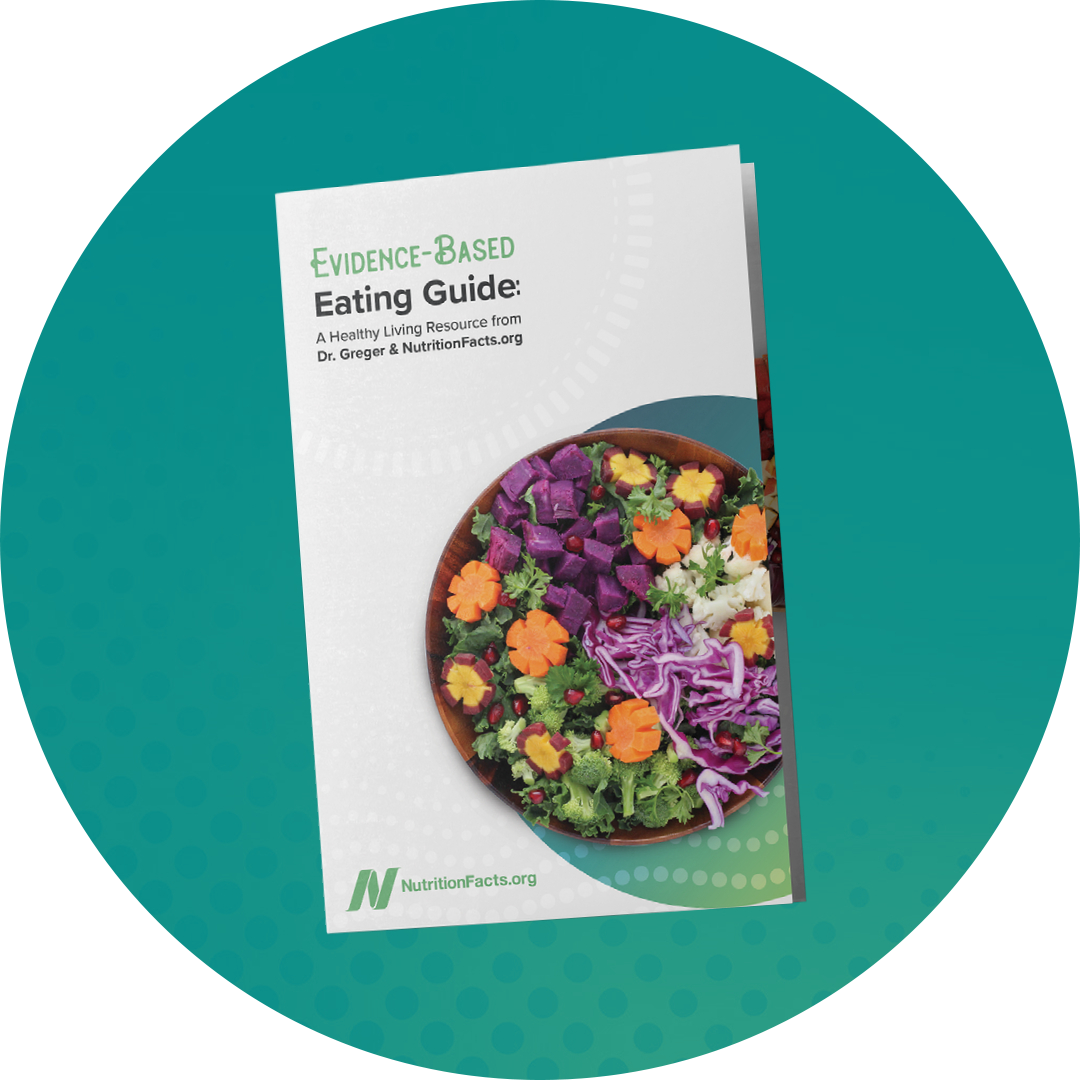
Evidence-Based Eating Guide
A Healthy Living Resource from Dr. Greger & NutritionFacts.org
The Evidence-Based Eating Guide: A Healthy Living Resource from Dr. Greger & NutritionFacts.org is a tool designed to help make the switch to a healthier lifestyle more simple. It's an easy to understand guide with applicable information for eating healthier, including a breakdown of Dr. Greger's Traffic Light Eating, tips for using Dr. Greger's Daily Dozen Checklist, sample menus, and more.
We hope that this guide will serve as a tool alongside NutritionFacts.org to help you, your loved ones, and your patients improve the length and quality of their lives.
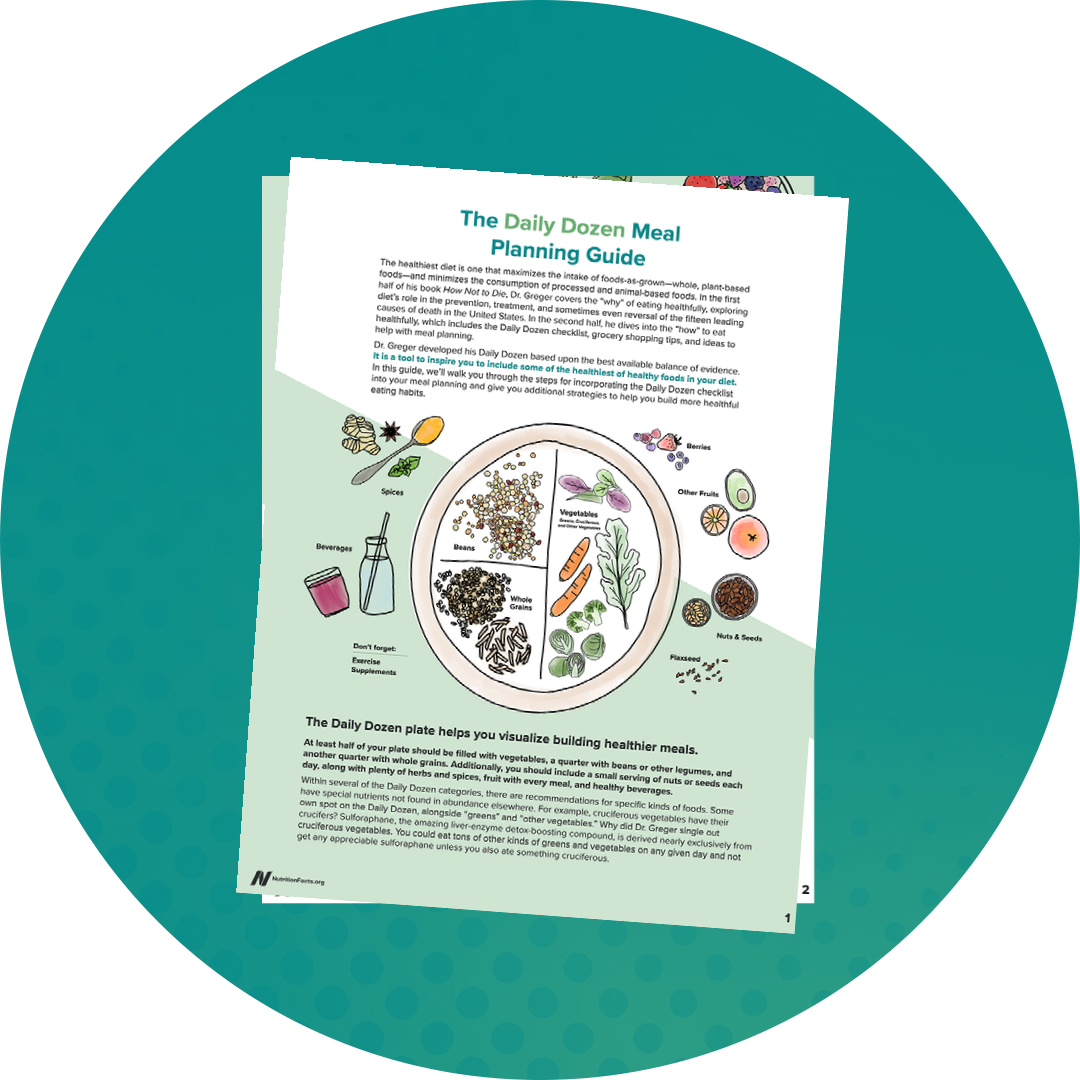
Daily Dozen Meal Planning Guide
The healthiest diet is one that maximizes the intake of foods-as-grown—whole, plant-based foods—and minimizes the consumption of processed and animal-based foods. In the first half of his book, How Not to Die, Dr. Greger covers the why's of eating healthfully, exploring diet's role in the prevention, treatment, and sometimes even reversal of the fifteen leading causes of death in the United States. In the second half, he dives into the how's of eating healthfully, which includes the Daily Dozen checklist, grocery shopping tips, and ideas to help with meal planning.
In our new Daily Dozen Meal Planning Guide, we'll walk you through the steps for incorporating the Daily Dozen checklist into your meal planning and give you additional strategies to help you build more healthful eating habits. Download your free copy of the guide today!
Subscribe to our free newsletter and receive a bundle of the Evidence-Based Eating Guide: A Healthy Living Resource from Dr. Greger & NutritionFacts.org and the Daily Dozen Meal Planning Guide today:
We also offer these materials in additional languages:
Download the Evidence-Based Eating Guide:
Download the Daily Dozen Meal Planning Guide:
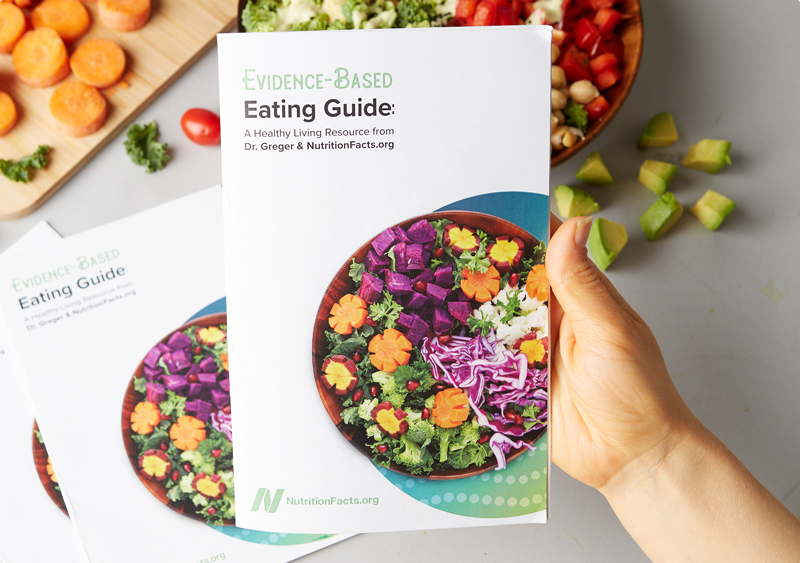
Looking for a printed version of the Evidence-Based Eating Guide?
You can purchase pre-printed copies of the guide, now available at cost.
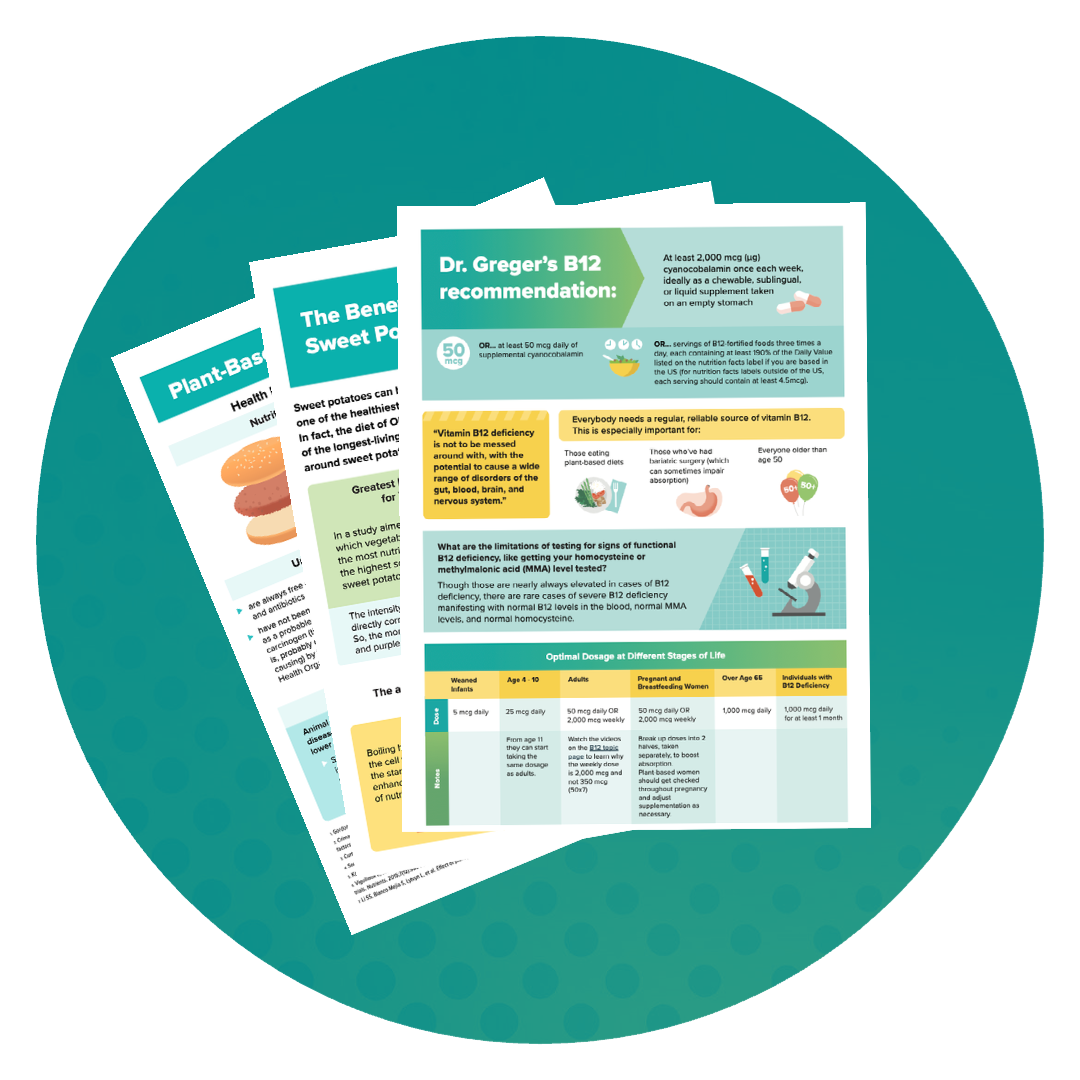
Infographics
Our eye-catching infographics boil down the main takeaways of topics such as fasting for weight loss, vitamin B12, plant-based meat alternatives, vitamin D, and sweet potatoes. They're available in English and Spanish, and you can view and download all of them for free.
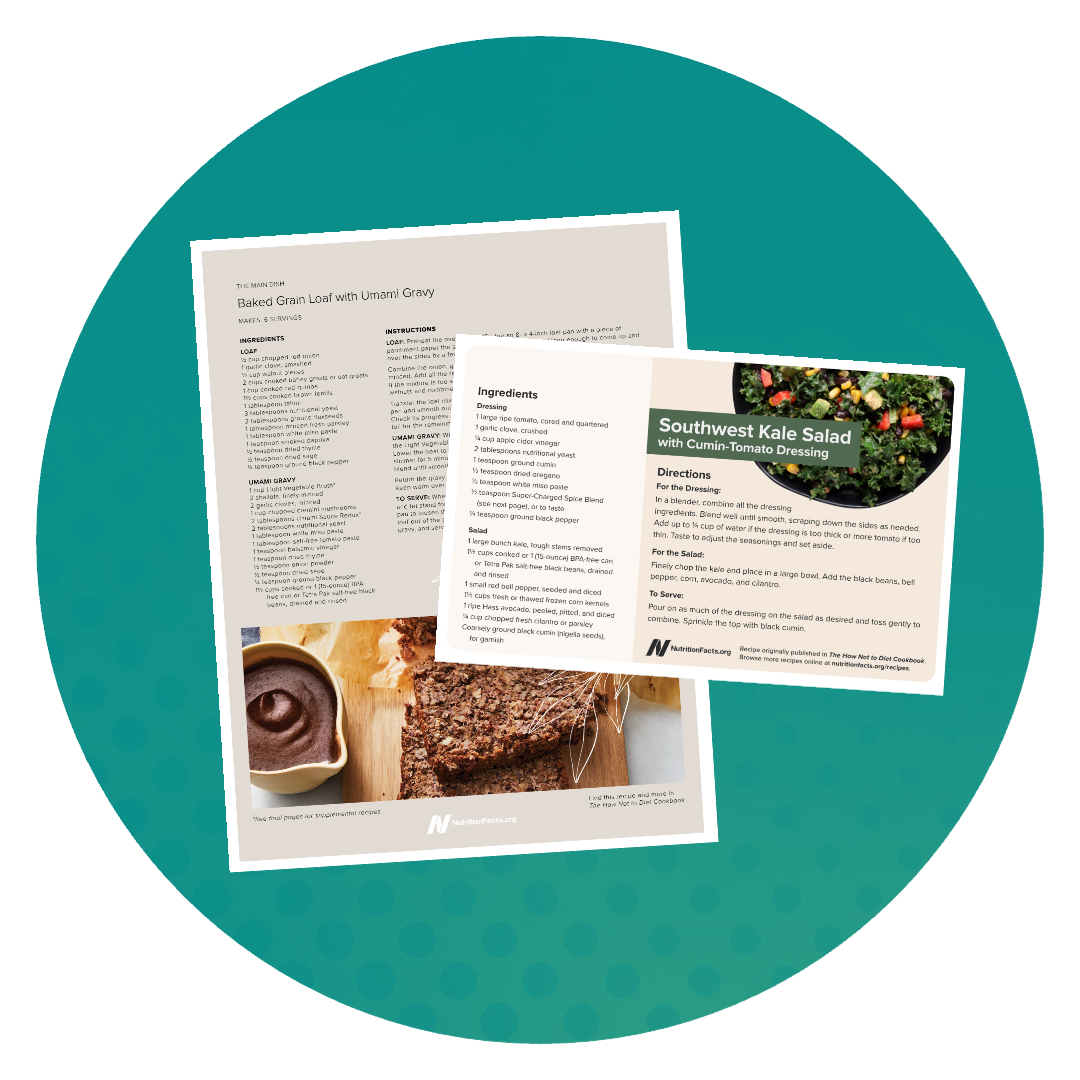
Recipe Cards
Let us join you in your kitchen! Our health-promoting recipes include favorites from The How Not to Die Cookbook and The How Not to Diet Cookbook, part of Dr. Greger's acclaimed, award-winning series, as well as contributions from the NutritionFacts.org team and friends. You can check out all of our recipes here. We've developed beautiful recipe cards for some, in English and Spanish, which you can download for free.
Creative Commons
Our Health Kit resources are licensed under the Attribution-NonCommercial-NoDerivatives 4.0 International (CC BY-NC-ND 4.0). Our materials can be copied and redistributed in any format as long as there is clear credit given to NutritionFacts.org, and as long as you are not using the material for commercial purposes. We do not allow alterations of these resources. Feel free to print and share this resource.
References
- Mokdad AH, Ballestros K, Echko M, et al. The state of US health, 1990-2016: burden of diseases, injuries, and risk factors among US states. JAMA. 2018;319(14):1444-72.
- Willett WC. Balancing life-style and genomics research for disease prevention. Science. 2002;296(5568):695-8.